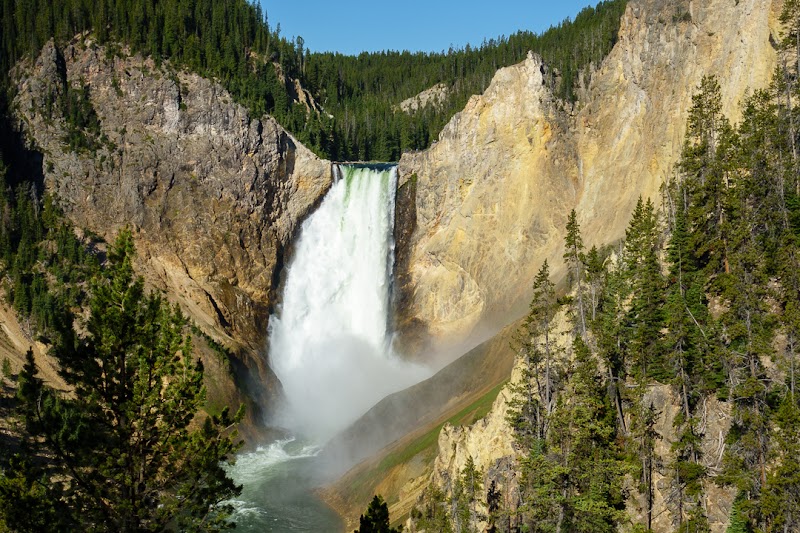Lamar Valley in Yellowstone National Park offers outstanding wildflower displays paired with accessible scenic trails. This guide blends detailed trail info with seasonal tips to help you plan an immersive yet practical adventure in one of America’s wildest landscapes.
Hydration is Non-Negotiable
Carry at least 2 liters of water per person. Water sources are often distant and untreated, making hydration critical especially on sunny, exposed sections.
Wear Trail-Ready Footwear
Choose sturdy hiking boots with good ankle support and traction to tackle mixed dirt, rocky patches, and wet areas near the riverbanks.
Start Early for Wildlife and Cool Temps
Wildlife is most active at dawn and dusk, and the cooler morning hours make hiking more comfortable during warmer months.
Respect the Ecosystem
Stay on marked trails to protect delicate wildflower habitats and minimize disturbance to native species.
Bloom and Trek: Exploring Yellowstone’s Lamar Valley Wildflowers and Trails
Lamar Valley’s vast expanse is one of Yellowstone’s most compelling wild spaces, where wildflowers stake their ground along trails carved by rivers and wind. This guide tracks the top wildflower blooms and scenic paths that let you walk alongside nature’s quietly fierce forces, from rushing creeks to windswept meadowlands.
Start at the Trout Lake Trailhead—an accessible point where the trail stretches 5 miles roundtrip with a modest elevation gain of 400 feet. The terrain is mostly gentle, weaving through open grasslands punctuated by willow thickets, crowned with energetic bursts of arrowleaf balsamroot and lupine swaying in the breeze. As you tread, the Lamar River dares you with its steady current nearby, adding a lively soundtrack.
For those seeking deeper immersion, the Slough Creek Trail offers 7 miles of forested paths climbing gradually by 600 feet. Here, Indian paintbrush and biscuitroot cluster near mossy banks while scattered Engelmann spruce and lodgepole pines stand watch. The trail’s gradual ascent reveals increasingly sweeping views of the valley floor, a broad stage where wildflowers thrive alongside wildlife sightings including pronghorn and elusive foxes.
Early morning hikes reveal dew-kissed blooms catching the first light while evenings tint the landscape with warm hues, perfect for reflection and viewing. Hydration is key—carry plenty of water, as shade is patchy, and boots with solid traction will protect your feet from uneven rocky stretches. Peak bloom typically hits in mid-July, but early June and late August offer quieter experiences with fewer crowds and unique plant stages.
Along these trails, wildflowers behave like sentries, blooming with persistence in soil shaped by Yellowstone’s rugged character. Experiencing them is a practical adventure—bring a field guide or app to identify species. Remember, the valley’s weather shifts quickly; layers are your shield against chill winds or sudden sun.
Whether you choose a shorter loop or an extended trek, Lamar Valley’s wildflower blooms and scenic trails deliver an adventure that is both vivid and grounded. Every step engages you with an ecosystem fiercely itself, inviting respect and curiosity, not conquest.
Nearby Trips
All Adventures
Boat Charters
Water Activities
Adventures near Gardiner
Discover the unique and memorable adventures that make Gardiner special.
Frequently Asked Questions
When is the best time to see wildflowers in Lamar Valley?
The wildflower season peaks from mid-June through July, although early June offers emerging blooms and late August showcases some late-season flowers. Weather can influence exact timing each year.
Are the Lamar Valley trails suitable for beginners?
Most trails are moderate with gradual elevation change and well-maintained paths, suitable for hikers with basic stamina. Beginners should start with shorter sections and bring proper gear.
What wildlife can I expect to see while hiking here?
Common sightings include elk, pronghorn, bison, and occasionally wolves or bears at a distance. Early mornings and evenings increase chances of encounters but always keep a respectful distance.
Are pets allowed on Lamar Valley trails?
Pets are prohibited on trails within Yellowstone National Park to protect wildlife and ecosystems, so plan accordingly.
How do I prepare for sudden weather changes?
Layered clothing, waterproof shells, and checking forecasts before you head out are critical since weather can shift quickly from sunny to stormy.
Is camping available near these trails?
Backcountry camping requires permits; the nearby Lamar Valley Campground offers tent sites during the peak season. Reservations are recommended well in advance.
Recommended Gear
Water Bottle or Hydration Pack
Ensures you stay hydrated during longer hikes and variable weather conditions.
Hiking Boots
Protect your feet and provide traction on mixed terrain.
Layers Including Windbreaker
Adjust to changing weather, blocking wind and light rain.
Wildflower Identification Guide or App
Enhances the experience by helping to identify common and rare species.
Local Insights
Hidden Gems
- "The small meadow near Trout Lake where less common alpine wildflowers emerge."
- "A quiet viewpoint overlooking Slough Creek, ideal for spotting bobcats at dawn."
Wildlife
- "Grey wolves are occasionally seen here, especially in early mornings."
- "American dipper birds frequent fast-moving streams, a challenging sight to catch."
History
"Lamar Valley was historically a corridor for Native American tribes and later trappers, with trails that follow paths forged over centuries of human and animal passage."

